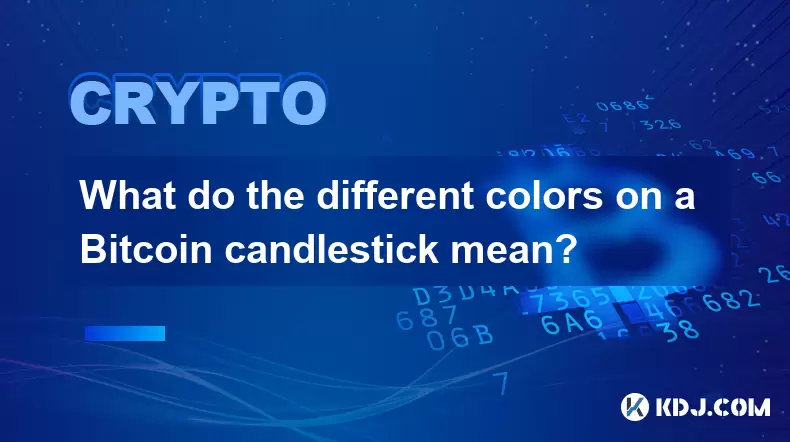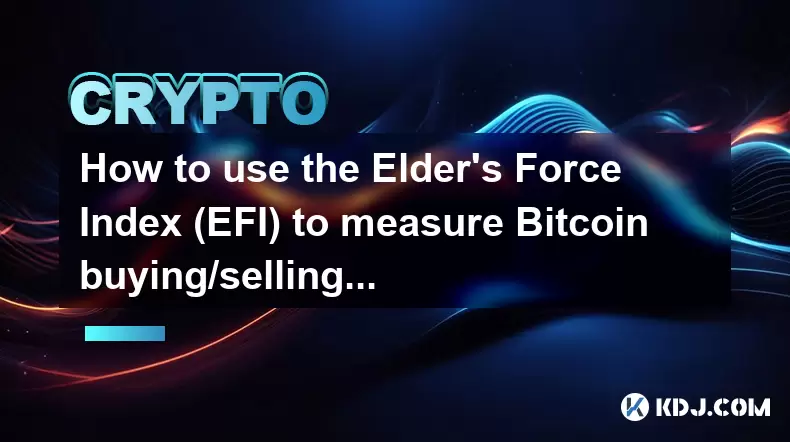-
 Bitcoin
Bitcoin $108,562.4295
0.46% -
 Ethereum
Ethereum $2,533.9553
1.52% -
 Tether USDt
Tether USDt $1.0002
-0.01% -
 XRP
XRP $2.2542
2.23% -
 BNB
BNB $662.4567
1.48% -
 Solana
Solana $151.4114
3.48% -
 USDC
USDC $0.9999
0.00% -
 TRON
TRON $0.2860
0.91% -
 Dogecoin
Dogecoin $0.1685
3.72% -
 Cardano
Cardano $0.5809
1.63% -
 Hyperliquid
Hyperliquid $39.2916
1.85% -
 Sui
Sui $2.8874
0.85% -
 Bitcoin Cash
Bitcoin Cash $496.5801
2.72% -
 Chainlink
Chainlink $13.3582
2.48% -
 UNUS SED LEO
UNUS SED LEO $9.0279
0.07% -
 Avalanche
Avalanche $18.0773
2.30% -
 Stellar
Stellar $0.2426
3.05% -
 Toncoin
Toncoin $2.9086
6.01% -
 Shiba Inu
Shiba Inu $0.0...01170
2.97% -
 Hedera
Hedera $0.1587
3.47% -
 Litecoin
Litecoin $87.4596
1.13% -
 Monero
Monero $317.0425
0.73% -
 Polkadot
Polkadot $3.3778
1.90% -
 Dai
Dai $0.9999
-0.01% -
 Ethena USDe
Ethena USDe $1.0001
-0.01% -
 Bitget Token
Bitget Token $4.4095
0.63% -
 Uniswap
Uniswap $7.3593
6.80% -
 Pepe
Pepe $0.0...09910
3.64% -
 Aave
Aave $274.7388
2.68% -
 Pi
Pi $0.4607
0.48%
What do the different colors on a Bitcoin candlestick mean?
Bitcoin candlestick charts use green and red colors to indicate bullish or bearish price movements, helping traders assess market sentiment and potential trend reversals.
Jul 07, 2025 at 04:01 am

Understanding Bitcoin Candlestick Charts
Bitcoin candlestick charts are a popular tool among traders for analyzing price movements. These charts provide visual representations of price action over specific time intervals, and each candlestick contains valuable information about the open, high, low, and close prices during that interval. The color of a candlestick is one of the most immediate indicators of market sentiment—whether buyers or sellers were in control during that period.
Green candlesticks indicate that the closing price was higher than the opening price, signaling bullish momentum.
Red candlesticks show that the closing price was lower than the opening price, reflecting bearish pressure.
This simple color coding allows traders to quickly assess whether buying or selling pressure dominated during a given time frame.
The Anatomy of a Bitcoin Candlestick
Each candlestick consists of a body and wicks (also known as shadows). The body represents the range between the opening and closing prices. If the candle is green, the bottom of the body marks the open price and the top marks the close. In contrast, if the candle is red, the top of the body indicates the open price, while the bottom shows the close.
The wicks extend above and below the body to show the highest and lowest prices reached during that time interval. Long upper wicks suggest resistance levels where selling pressure pushed the price back down. Conversely, long lower wicks often point to support zones where buyers stepped in to push the price higher.
By analyzing both the color and structure of candlesticks, traders can gain insights into potential trend reversals, continuations, or consolidation phases in the Bitcoin market.
Interpreting Green Candlesticks
A green candlestick on a Bitcoin chart signifies positive price movement. It means that at the end of the specified time frame—whether it's one minute, five minutes, one hour, or one day—the price closed higher than it opened. This typically reflects strong buying interest and suggests that bulls are in control.
In a broader context, consecutive green candles may indicate a rising trend or strong accumulation phase. If these candles have small wicks and large bodies, it implies consistent demand without significant pullbacks. However, unusually long upper wicks on green candles might hint at overbought conditions or impending resistance testing.
Traders often look for patterns involving multiple green candles, such as the three white soldiers, which can signal a healthy uptrend reversal following a downtrend.
Analyzing Red Candlesticks
A red candlestick appears when the closing price is lower than the opening price within the given time frame. This signals that bears were more aggressive during that period, pushing the price downward. A series of red candles can indicate a downtrend or a distribution phase where holders are offloading their positions.
If red candles form with long lower wicks, it could mean that although sellers dominated, buyers attempted to step in near certain support levels. On the other hand, red candles with minimal wicks and large bodies usually represent strong selling pressure without much countertrend activity.
Patterns like the three black crows—a sequence of three bearish red candles—can serve as warning signs of an ongoing downtrend or a trend reversal from bullish to bearish.
Combining Color Analysis with Other Indicators
While candlestick colors offer quick insights, they should not be used in isolation. Combining them with technical indicators like moving averages, RSI (Relative Strength Index), and MACD (Moving Average Convergence Divergence) can enhance decision-making accuracy.
For example:
- If a green candle forms near a key support level and coincides with an oversold reading on the RSI, it could signal a strong buying opportunity.
- A red candle appearing after a prolonged uptrend, especially when accompanied by overbought RSI values, may warn of a potential pullback.
- Volume analysis alongside candlestick color can confirm strength behind price moves—higher volume on green days supports bullish conviction, while elevated volume on red days confirms strong selling pressure.
Candlestick color becomes even more powerful when integrated into broader chart patterns such as engulfing patterns, doji formations, and hammer/reversal setups.
Frequently Asked Questions
Q: Can candlestick colors change depending on the platform?
No, candlestick colors are standardized across platforms. Green generally means the close was higher than the open, and red means the close was lower. However, some platforms allow users to customize colors according to personal preferences.
Q: What does a black candlestick mean?
Some platforms use black instead of red for bearish candles. A black candlestick has the same meaning as a red one—it indicates that the closing price was lower than the opening price.
Q: How reliable are candlestick colors for predicting Bitcoin’s price movement?
Candlestick colors alone are not sufficient for making trading decisions. They must be interpreted in the context of volume, trendlines, and supporting technical indicators to increase reliability.
Q: Do candlestick colors work the same way for altcoins?
Yes, candlestick charts function identically for all cryptocurrencies, including altcoins. The interpretation of green and red candlesticks remains consistent regardless of the asset being analyzed.
Disclaimer:info@kdj.com
The information provided is not trading advice. kdj.com does not assume any responsibility for any investments made based on the information provided in this article. Cryptocurrencies are highly volatile and it is highly recommended that you invest with caution after thorough research!
If you believe that the content used on this website infringes your copyright, please contact us immediately (info@kdj.com) and we will delete it promptly.
- XRP's Wild Ride: Bullish Sentiment vs. Market Volatility - What's Next?
- 2025-07-07 09:30:12
- Ethereum Name Service (ENS) Price Forecast 2025-2031: What the Future Holds
- 2025-07-07 08:50:12
- Bitcoin's Outflow Ratio Signals Bullish Trend: Is a Breakout Imminent?
- 2025-07-07 09:30:12
- Standard Chartered's Bold Bitcoin Prediction: $200K by Year-End?
- 2025-07-07 09:50:11
- XRP Price: Rally, Crash, or Just Cruising? A New Yorker's Take
- 2025-07-07 08:55:12
- Worldcoin Price Prediction: Bullish Triangle Hints at Potential Breakout!
- 2025-07-07 08:30:13
Related knowledge

How to identify a volatility contraction pattern on Bitcoin using indicators?
Jul 07,2025 at 07:28am
What is a Volatility Contraction Pattern in Bitcoin Trading?A volatility contraction pattern refers to a phase where the price movement of an asset, such as Bitcoin, becomes increasingly narrow over time. This typically signals that the market is consolidating and may be preparing for a breakout or breakdown. In simpler terms, when volatility contracts,...

What is the Woodies CCI indicator and can it be used for Bitcoin?
Jul 04,2025 at 05:14pm
Understanding the Woodies CCI IndicatorThe Woodies CCI indicator is a variation of the traditional Commodity Channel Index (CCI), which was originally developed by Donald Lambert. The standard CCI measures the current price level relative to an average price over a given period, typically 14. However, the Woodies version modifies this calculation to mak...

How to use indicators to trade the opening range breakout for Bitcoin CME futures?
Jul 05,2025 at 07:35pm
What Is the Opening Range Breakout Strategy?The opening range breakout (ORB) strategy is a popular trading technique used in both traditional markets and cryptocurrency futures, particularly for Bitcoin on the CME. This method involves identifying a specific price range formed during the early phase of a trading session and then taking positions when th...

What does a bearish cross on the Stochastic RSI mean for Bitcoin?
Jul 05,2025 at 07:18pm
Understanding the Stochastic RSI IndicatorThe Stochastic RSI (Relative Strength Index) is a momentum oscillator used in technical analysis to identify overbought or oversold conditions in an asset's price. It combines two well-known indicators — the RSI and the Stochastic Oscillator — to provide more nuanced signals than either could alone. The Stochast...

How to use the Elder's Force Index (EFI) to measure Bitcoin buying/selling pressure?
Jul 07,2025 at 02:50am
What is the Elder's Force Index (EFI)?The Elder's Force Index (EFI) is a technical indicator developed by Dr. Alexander Elder to measure the power behind price movements in financial markets. It combines both price change and volume to assess buying or selling pressure over a specific period. In the context of Bitcoin trading, EFI helps traders understa...

What are the limitations of using technical indicators for Bitcoin?
Jul 06,2025 at 03:35am
Understanding the Role of Technical Indicators in Cryptocurrency TradingIn the realm of Bitcoin trading, technical indicators are tools used by traders to analyze historical price data and volume to predict future price movements. These indicators—such as Moving Averages, Relative Strength Index (RSI), and MACD—are widely adopted across traditional fina...

How to identify a volatility contraction pattern on Bitcoin using indicators?
Jul 07,2025 at 07:28am
What is a Volatility Contraction Pattern in Bitcoin Trading?A volatility contraction pattern refers to a phase where the price movement of an asset, such as Bitcoin, becomes increasingly narrow over time. This typically signals that the market is consolidating and may be preparing for a breakout or breakdown. In simpler terms, when volatility contracts,...

What is the Woodies CCI indicator and can it be used for Bitcoin?
Jul 04,2025 at 05:14pm
Understanding the Woodies CCI IndicatorThe Woodies CCI indicator is a variation of the traditional Commodity Channel Index (CCI), which was originally developed by Donald Lambert. The standard CCI measures the current price level relative to an average price over a given period, typically 14. However, the Woodies version modifies this calculation to mak...

How to use indicators to trade the opening range breakout for Bitcoin CME futures?
Jul 05,2025 at 07:35pm
What Is the Opening Range Breakout Strategy?The opening range breakout (ORB) strategy is a popular trading technique used in both traditional markets and cryptocurrency futures, particularly for Bitcoin on the CME. This method involves identifying a specific price range formed during the early phase of a trading session and then taking positions when th...

What does a bearish cross on the Stochastic RSI mean for Bitcoin?
Jul 05,2025 at 07:18pm
Understanding the Stochastic RSI IndicatorThe Stochastic RSI (Relative Strength Index) is a momentum oscillator used in technical analysis to identify overbought or oversold conditions in an asset's price. It combines two well-known indicators — the RSI and the Stochastic Oscillator — to provide more nuanced signals than either could alone. The Stochast...

How to use the Elder's Force Index (EFI) to measure Bitcoin buying/selling pressure?
Jul 07,2025 at 02:50am
What is the Elder's Force Index (EFI)?The Elder's Force Index (EFI) is a technical indicator developed by Dr. Alexander Elder to measure the power behind price movements in financial markets. It combines both price change and volume to assess buying or selling pressure over a specific period. In the context of Bitcoin trading, EFI helps traders understa...

What are the limitations of using technical indicators for Bitcoin?
Jul 06,2025 at 03:35am
Understanding the Role of Technical Indicators in Cryptocurrency TradingIn the realm of Bitcoin trading, technical indicators are tools used by traders to analyze historical price data and volume to predict future price movements. These indicators—such as Moving Averages, Relative Strength Index (RSI), and MACD—are widely adopted across traditional fina...
See all articles

























































































